#tribes in Mongolia
Explore tagged Tumblr posts
Text
youtube
1 note
·
View note
Photo
Pretty. The horns reminds me of Star Wars



Mongolian Women Traditional Dress
#mongolia#mongolian#women#traditional#dress#tribe#nordic#northasia#culture#cultural#Mongolian fashion
5 notes
·
View notes
Note
Hi! Do you have any thoughts on tea ceremonies in the Avatar universe or do you have any resources about tea ceremonies? It’s a massive rabbit hole and I can’t find a concise video on the social meanings (and admittedly long history) or an audiobook. (Is it silly that most of my info comes from anime and analysis of the Tale of Genji?)
Tea ceremony is definitely a field of study that is both expansive and deep. Unfortunately, it's not something I'm very knowledgeable about. I guess you could say it's not my cup of tea.
The best I can do is give you some general guidelines and details regarding tea ceremony:
Firstly, lets establish what tea ceremony is and isn't. We'll go with Wikipedia's definition: "Tea ceremony is a ritualized practice of making and serving tea (茶 cha) in East Asia practiced in the Sinosphere."
Other cultures (Mongolia, Tibet, etc.) also have very rich tea cultures as well, but it seems the emphasis in those cultures is on the context and ritual behind the serving of tea to someone, rather than the tea making process itself. I would distinguish these rituals as being more like tea rites. For the record, I just coined the term tea rite off the top of my head, and am making this distinction to narrow the research that needs to be done here. ^_^;;;
To clarify further, I would also say that wedding tea ceremony is really more an example of a tea rite than a tea ceremony, despite the name. Wedding tea ceremonies place emphasis on showing respect towards the parents, with tea-serving being the ritual that shows this appreciation. The focus is not so much on the brewing of the tea.
Tea ceremony traditions vary by nation and region. I would advise to pick a specific area's tea ceremony when integrating these practices into your story.
Chinese tea ceremony is known as gongfu cha (功夫茶) or "skillfully making tea". It's a sophisticated way of brewing and appreciating tea. This Wikipedia article details the steps of Chinese tea ceremony really well. It even details what materials should be used for all the tea accessories.
The Japanese tea ceremony Wikipedia article is also quite detailed. Compared to Chinese tea ceremony, Japanese tea ceremony seems to have a stronger religious/spiritual connotation, as it's very influenced by Zen Buddhism and Shintoism. There's more emphasis on what type of clothing should be worn and where the ceremony should be performed. Japanese tea ceremony is also unique for its use of "thick tea", powdered tea leaves brewed with a low ratio of water (matcha tea).
Last but not least, the Korean tea ceremony Wiki article. It doesn't seem to be as formal as Japanese tea ceremony, but it does seem to have a stronger religious connotation than Chinese gongfu cha, as many of the traditions developed in the Korean temples.
This video and its YouTube channel are great insights into the world of Chinese tea culture.
Also! Teapets are common in Chinese tea ceremony and they're really cute! You're supposed to pour tea over them for good luck ("feeding them") and they can be used to test the temperature of the tea.
As for how it could relate to ATLA, you could have the Earth Kingdom practice Chinese-style tea ceremony and the Fire Nation practice Japanese-style or Korean-style.
Air Nomads don't have tea ceremonies, per se, but Tibetan "tea rites" as I defined above.
The Water Tribe views tea more pragmatically, treating it as an herbal remedy.
So this is just my very surface-level, cursory knowledge of East Asian tea ceremony. I hope this post provides a bit more direction in your research journey. ^_^;
Like what I’m doing? Tips always appreciated, never expected. ^_^
https://ko-fi.com/atlaculture
190 notes
·
View notes
Text

A young woman belonging to the TSAATAN tribe in Mongolia, Central Asia, riding a deer. The Tsaatan are a tribe of just under 250 people who are considered the last reindeer herders in Mongolia.
125 notes
·
View notes
Text

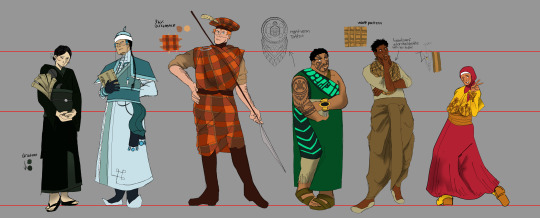
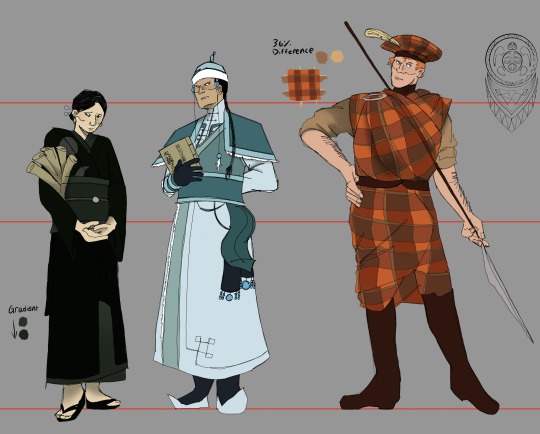


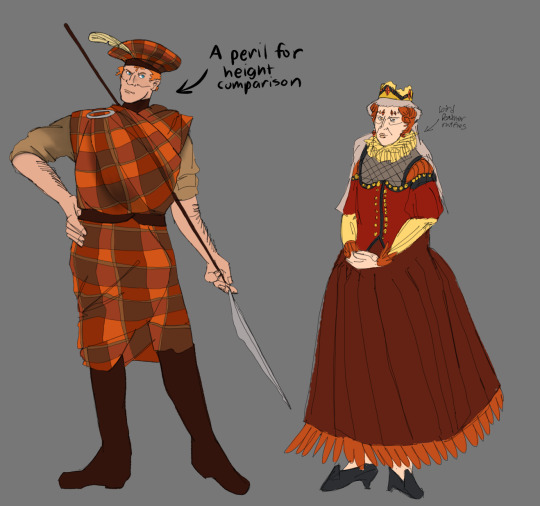



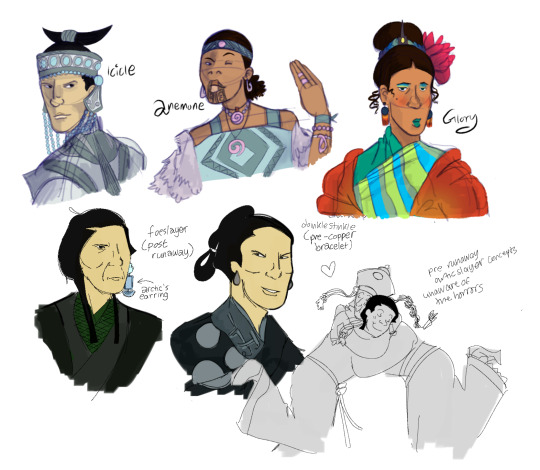
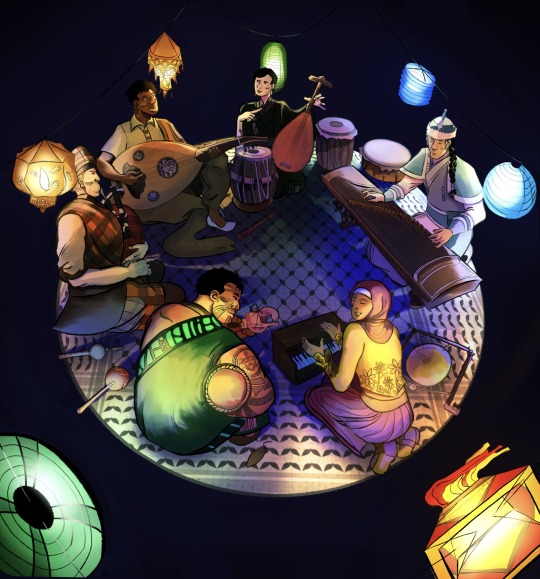
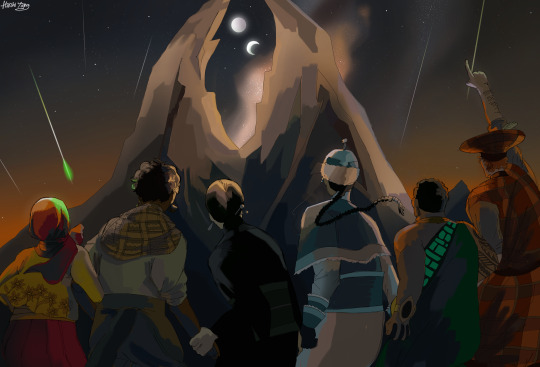

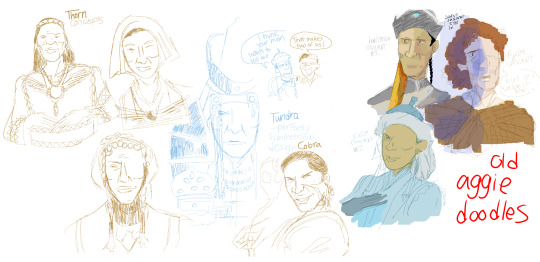

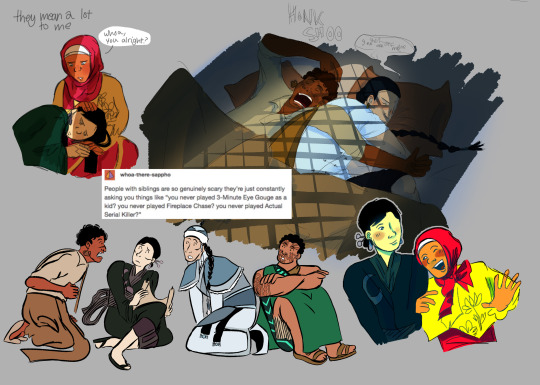
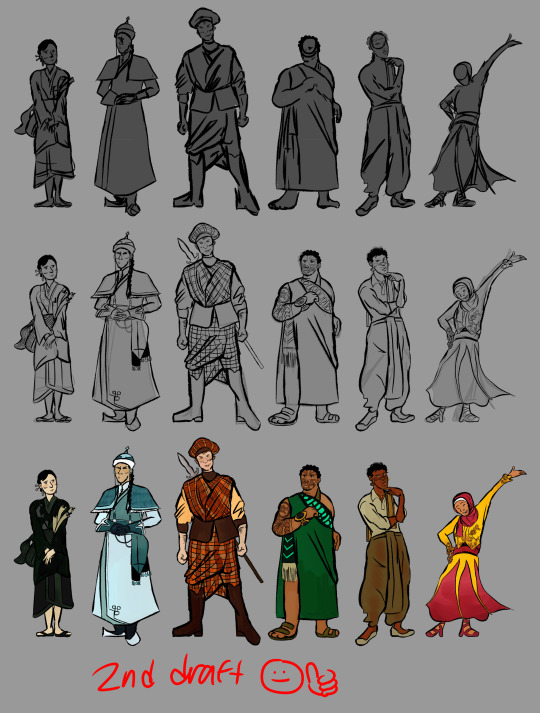
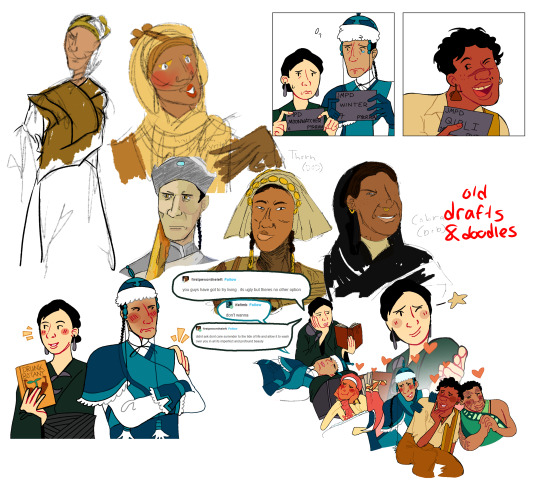
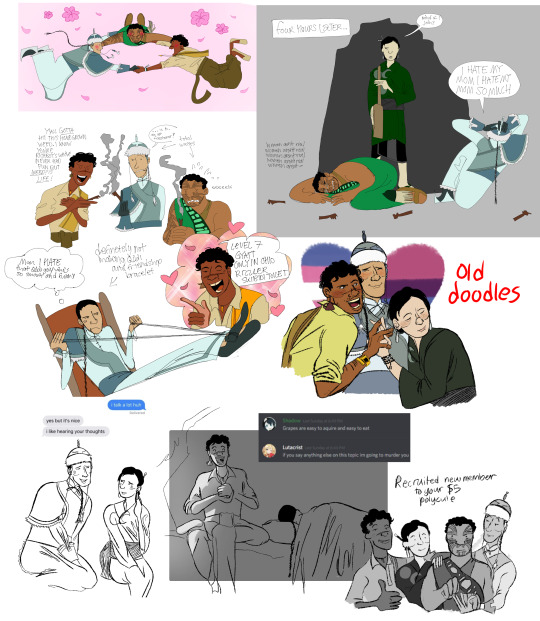

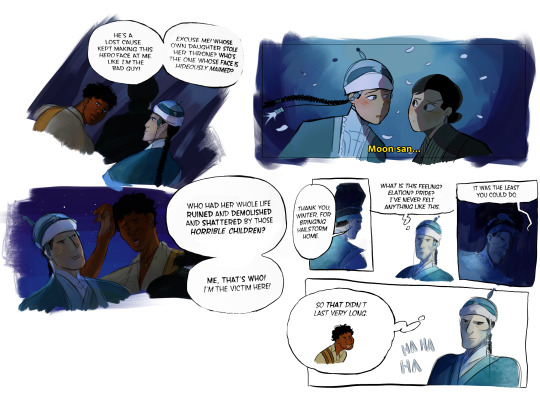
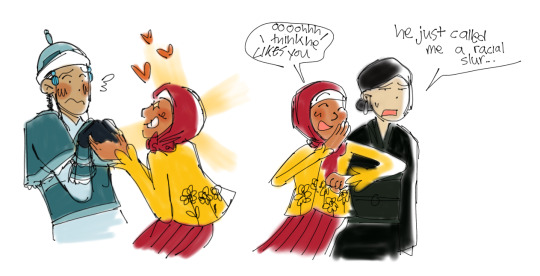
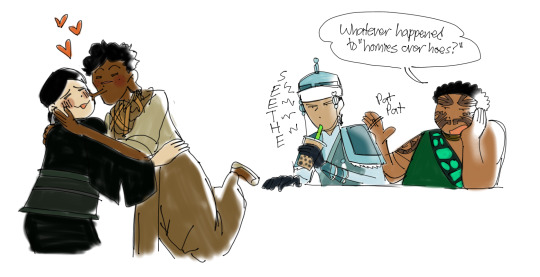
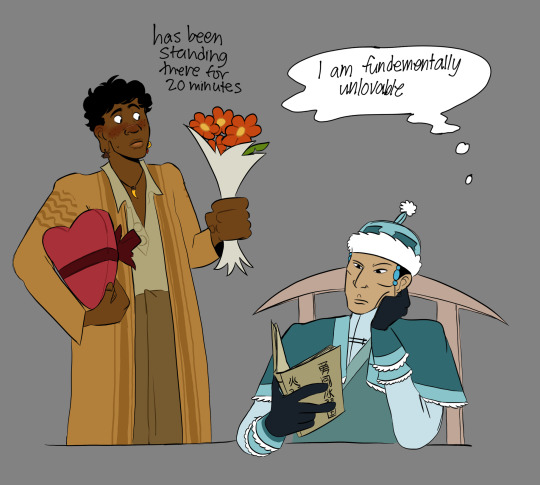
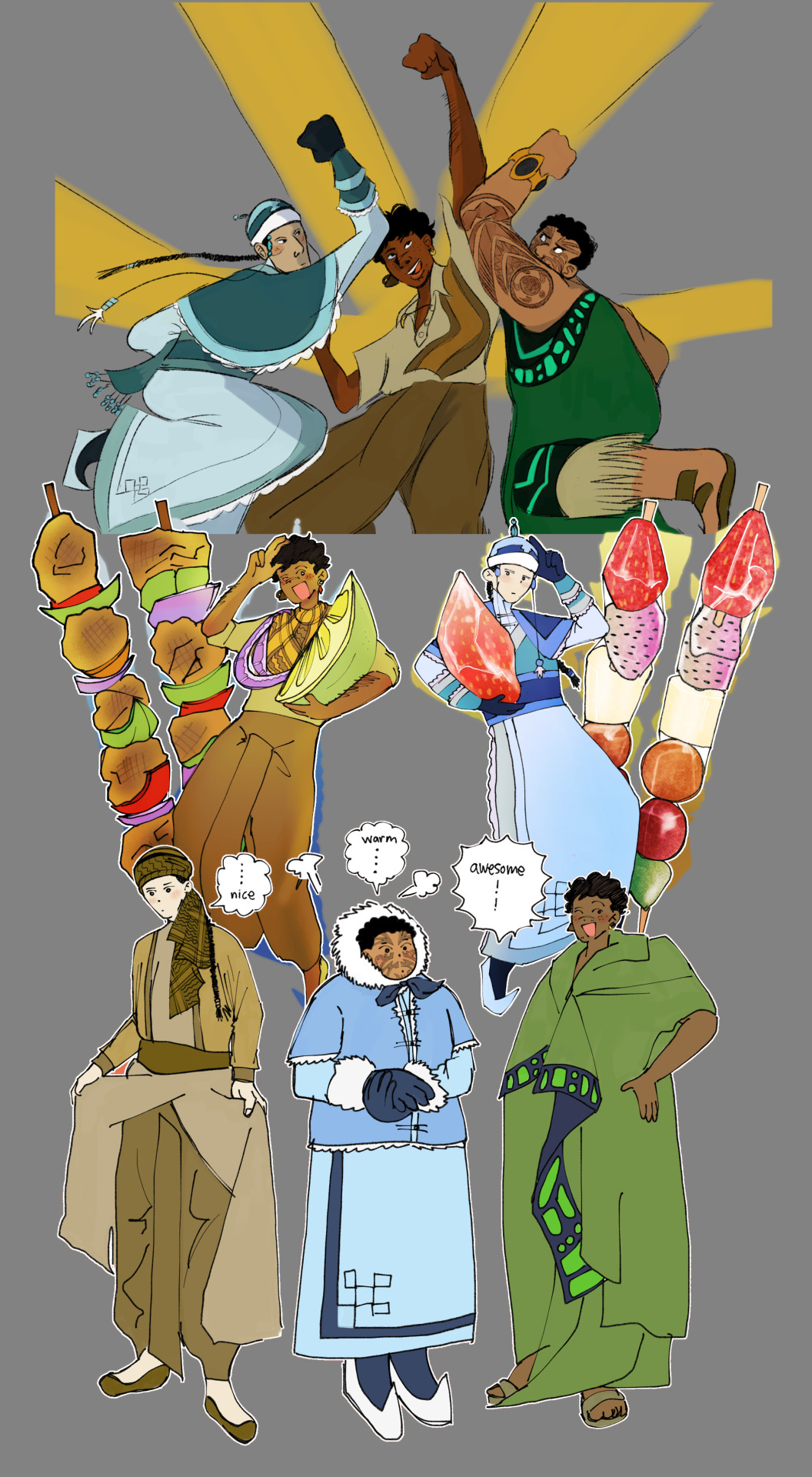

ANOTHER human au art compilation! Here’s the first! More info about the AU and their cultures under cut ~
Groundwork:
-Abilities which stem from things inherent to dragon biology (fire, venom, frostbreath, gills, etc.) aren’t present. More traditionally supernatural gifts (mindreading, oracle, animus magic, etc.) are still present. In retrospect this makes the Nightwings completely op but shhh
-Each tribe is inspired off a mishmash frankenstein of different real-world cultures
-Dragons are an endangered species, just a hum in the background and nearly hunted to extinction. They’re hardly considered a threat, especially when most humans haven’t even seen one in their lives. Once the centre of each people’s culture and civilisation, they’re now nothing more than Bigfoot sightings or exotic pets.
Culture:
-Sandwings are the least homogeneous tribe and take inspiration from various cultures in the Indian subcontinent and Arab nations (most largely India and Palestine). Many subcultures exist within the larger Sandwing kingdom. Common identifies (not present in them all, but there will usually be at least one) include gold accented accessories, darker skin, and clothing with light, desaturated, yellow/orange tones. They’re renowned for their abundance of poison, excellent street food, musical talent, and stereotypically maliciously intelligent. Regardless of class there’s a nation wide pattern (you can find the reference for it by Qibli’s headscarf) symbolising trade routes, oasis waters and dunes. It’s a symbol of national pride (included on thorn’s dress, and ostrich’s headband/headscarf).
-Nightwings are, on the contrary, the most homogeneous tribe due to their small population. They’re based on Japan (spanning multiple eras). I like to think the Nightwings lost a lot of their culture after migrating to the volcano, for they were once the most religious tribe, worshiping the moon alongside the Icewings, which I’ll get to later on their cultural similarities. I promise it’ll make sense. By now, all their deeply religious traditions have been relegated to superstitions. It was said they were blessed by the moons, but the connection has been largely severed. Only old dresses follow the tradition of embroidering in the moons they were born under. Moonwatcher’s dress is something akin to a hand-me-down, as are her silver earrings, it’s by coincidence it lined up with her actual birthday. Moon’s family was an exception because she came from a long line of seers (or alleged seers) who have done their best to preserve a crumbling culture. Common identifiers include near pitch black clothing and skin as pale as the moon.
-Icewings have some of the largest populations, however, are surprisingly homogenous. Most sub-cultural differences are as a result of class. They’re based on Mongolia and Manchuria. Like Nightwings they are also deeply religious, maintaining their beliefs through rigorous scholarship. Hair has intrinsic religious value as a gift from your family- therefore it cannot be cut. The same goes for ear piercings and any other physical alterations to your body. IceWing jewellery as a result is very distinct because of its lack of need for an ear piercing, hooking around the back of the ear instead. Common identifies include long/braided hair, and light, cool-colored clothing suited for the cold.
-Skywings are loosely Scottish inspired, and I do not have a lot to say about the rest of the tribes. Most of their clothing have feathered accents. The peregrine is a sign of luck and wealth, with their feathers being adorned on the upper classes. Geese and chickens, being common farm animals, are found adorned on working classes. The second richest tribe, employing silver, gold, lazuli, and about any gem they can find in their clothing. Common identifies include curly orange/red hair, taller statures, feathered accents, a tartan like pattern, and clothing ranging from yellow to magenta.
-Seawings are loosely based on various Polynesian cultures, most prominently that of the Māori. The sea has an intrinsic religious value to them, with all children learning to swim, sail, and/or fish. They live off the sea’s resources, rarely consulting the surrounding land for supplies. On rare occasions albatross birds and seagulls are plucked for headdresses. These are reserved for high ranked royalty. Their clothing is loose and well adapted for the warm beach setting. Common identifiers of Seawings include ta moko like tattoos, olive skin, and clothing ranging from lime to purple.
-Rainwings are loosely based on Thai, Indonesian, and Cambodian cultures. They’re colourful and have the second largest poison reserves (bested by sandwings). Having once been a trade centred tribe, now they’re isolationist, albeit not intentionally. They have many history records, almost as detailed as that of Icewings, but the art has been lost to a changing cultural atmosphere. Once too religious, now their intrinsically religious practices are more cultural. Their clothing is similar to sandwings in the fact they cover as much of the body as convenient but remain loose and breezy. Common identifiers include bronze tan skin, vibrant pigmented clothing, and flower motifs. Nightwing villages don’t follow that guideline, they build on the ground as a tribe with a focus on hunting. I’m assuming everything in this universe is made proportional to dragons, hence why the trees are so large. This assumption is based off that specific panel of Bandit in the book six graphic novel eating a blueberry as big as his head.
-Mudwings are sooo underdeveloped in my au (following in the steps of Tui herself) but they’re based on southern Chinese and Vietnamese cultures! They live in cities akin to Chinese floating villages, Vietnamese floating markets, and Tulou (architectural style of the Chinese Hakka) made of mud bricks. They're a very agricultural based people. Many of their villages are isolated communities- their emphasis on family extending to their towns. Common identifiers include umber skin, straw conical hats, and practical clothing in shades of brown.
#wof#wings of fire#wof au#wings of fire fanart#wings of fire au#wof art#wof fanart#wof moonwatcher#wof winter#WoF peril#wof turtle#wof qibli#WoF kinkajou#wof scarlet#queen scarlet#wof icicle#wof pyrite#wof sora#wof foeslayer#wof lynx#wof thorn#wof ostrich#WoF cobra#wof glory#WoF anemone#wof darkstalker#darkstalker#hwof#Quotidianish#Quotidianish’S wings of fire
355 notes
·
View notes
Text

The First Turkic Khaganate, 576 CE. Image credit to Ktrinko on Wikimedia Commons.

Göktürks depicted in Mongolia, 6th-8th Century CE. Source https://depts.washington.edu/silkroad/museums/ubhist/ubhist15a.jpg
The origin of Turkic culture is as mysterious as the lands from whence they came from. Due to the very nature of nomadic peoples it can be difficult to get concrete answers as to their origin. At times Turkic speaking peoples lived in what is now Mongolia. In others they shared borders with Korea, China, Armenia and the Middle East.
They migrated as far as Eastern Europe and caused other nomadic cultures to migrate as well. They roamed the steppes of Asia during the birth of ancient China, the fall of the Western Romans, and the rise of the East Romans(Byzantines). Their culture can be difficult to pin down simply due to how nomadic governance functioned. At times Turkic speaking peoples would united into shared confederations. In other times their federations would shatter into countless splintered tribes. On rare occasion they would incorporate non Turkic nomadic tribes into their ranks, or the ancestral tongues of the Turkic language would simply be used as a language for trade, making it difficult still to track down what was part of a shared Turkic empire and what was simply an outside peoples looking inward.
Keep in mind nomadic horse cultures had a habit worldwide of incorporating other horse-peoples into their ranks. Fast forward a thousand years and the Mongolians did the same thing, absorbing Turkic speaking peoples into their empire from the Golden Horde all the way to the Ilkhanids. The confederation of Turkic tribes that made up the Göktürks would have likely behaved in a similar manner.
That tangent aside let us discuss the Göktürks. As mentioned earlier there is some semantic debate about whether the first Göktürk Khaganate was actually an empire or rather more akin to a confederacy of tribes. There is precedent for both, seeing as nomadic cultures in later centuries flip-flopped from federation to empire. Regardless the Göktürks are to most scholars credited with the formation of the First Turkic Khaganate.
From the 500s to 700s CE the First Turkic Khaganate united various Turkic speaking peoples into an alliance that made them a threat to their more urbanized neighbors. China and Persia both had troubles with this "horde" of wild horsemen. Despite their infamous reputation they were not afraid of trade when it suited them. They had good relations with the ancestral kingdom of modern day Korea, the Goguryeo. Various tribes in Bactria were brought under their heel. When they weren't fighting China they were receiving Buddhist missionaries from them. They also received many Manichean and Nestorian missionaries.
Despite their multiculturality they typically were adamant believers in Tengri, the leader of their nomadic pantheon who later found himself a member of the Mongolian pantheon. They were among the first in written history to refer to themselves as some variant of the word "Turk". Names such as KökTürk, Kök-Türks, Kök türü̲k̲, Köktürkler, and Tujue are among the many earlier names given to these nomads going back as early as the 500s in Chinese writings and orkhon script.
Under the leadership of pseudo-mythical Bumin Khan they overthrew another nomadic peoples known as the Xiongu around modern day Mongolia and Central Asia and established what is considered the First Turkic Khaganate around 552 CE. They quickly established trade routes that stretched from the Middle East to the borders of Korea.
There is some belief that orkhon script, the writing system of the Göktürks, descended directly from cave markings from thousands of years prior to the empire's formation. While this is a hotly debated and unproven theory it is among the most fascinating potential candidates for the script's origins. (Şaban Taş).
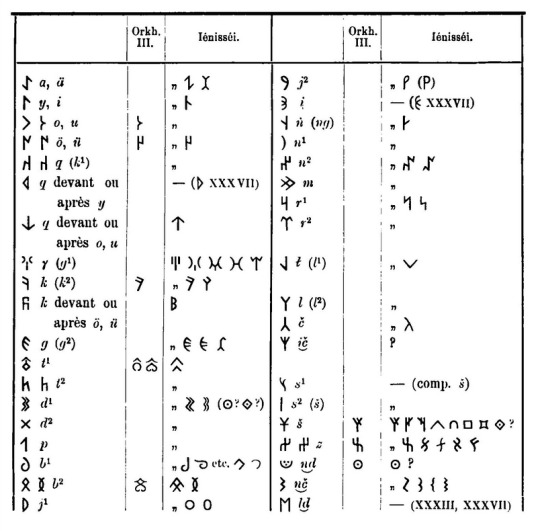
Orkhon table: Thomsen, Vilhelm. Inscriptions de l’Orkhon déchiffrées, Suomalais-ugrilainen seura, Helsinki Toimituksia, no. 5 Helsingfors: La société de literature Finnoise (1893).
Photo credit to Vilhelm Thomsen on Wikimedia Commons.
While the Göktürks(First Turkic Khaganate) remained a threat to urbanized China for a few centuries its very loose nature was eventually its undoing. The Khaganate kept only rudimentary control of its many tribes, usually only banding together for conquest or defense against its more established neighbors. A civil war in the 580s and early 600s caused the empire to split in half into a Western and Eastern empire. The Göktürks fought against other Turkic speaking peoples such as the Huns, Khazars, and Uyghurs. For a short time they gave the Byzantines aid against its Sassanian Persian rival. But the civil war permanently weakened the Turks to the point that they became easy prey to their neighbors.
Through the remaining centuries the two remaining halves, the Western and Eastern empires, became victim to further civil infighting, Chinese invasion, and ironically war with their cousins the Uyghurs that did them in. The Turks that remained were either absorbed into enemy empires or fled outward. Descendants of this empire, the Oghuz, formed a new federation of their own. Descendants of the Oghuz went westward for trade, raiding, and mercenary work within the Arab and Persian world. In the 700s the survivors of this nomadic ethnic group came into contact with Islam and Christianity.
The Oghuz later gave birth to the Seljuks who conquered Iran as a launchpad into Anatolia. The Seljuks formed the Sultanate of Rum(Rome) in Anatolia much to the detriment of the Byzantine empire in 1071 CE. These Turks combined their own Turkic culture with Persian and Arabic. While the Seljuks themselves eventually dissolved their descendants the Ottomans survived well into the modern world and their child, Turkiye/Turkey, survives to this day.
Sources:
Şaban Taş. (n.d.). Historical Documents on the Origin of the Gokturk Alphabet. https://openaccess.yeditepe.edu.tr/yayinaea/%C5%9Eaban%20Ta%C5%9F_65d462c34436f.pdf
#culture#history#asian history#gokturks#turkiye#turkey#turkic#ancient history#article#world history#khaganate#turkish history
17 notes
·
View notes
Text
Stone Turtle of Karakorum, Mongolia, c. 1235-1260 CE: this statue is one of the only surviving features of Karakorum, which was once the capital city of the Mongol Empire

The statue is decorated with a ceremonial scarf known as a khadag (or khata), which is part of a Buddhist custom that is also found in Tibet, Nepal, and Bhutan. The scarves are often left atop shrines and sacred artifacts as a way to express respect and/or reverence. In Mongolia, this tradition also contains elements of Tengrism/shamanism.

The city of Karakorum was originally established by Genghis Khan in 1220 CE, when it was used as a base for the Mongol invasion of China. It then became the capital of the Mongol Empire in 1235 CE, and quickly developed into a thriving center for trade/cultural exchange between the Eastern and Western worlds.
The city attracted merchants of many different nationalities and faiths, and Medieval sources note that the city displayed an unusual degree of diversity and religious tolerance. It contained 12 different temples devoted to pagan and/or shamanistic traditions, two mosques, one church, and at least one Buddhist temple.
As this article explains:
The city might have been compact, but it was cosmopolitan, with residents including Mongols, Steppe tribes, Han Chinese, Persians, Armenians, and captives from Europe who included a master goldsmith from Paris named William Buchier, a woman from Metz, one Paquette, and an Englishman known only as Basil. There were, too, scribes and translators from diverse Asian nations to work in the bureaucracy, and official representatives from various foreign courts such as the Sultanates of Rum and India.
This diversity was reflected in the various religions practised there and, in time, the construction of many fine stone buildings by followers of Taoism, Buddhism, Islam, and Christianity.
The prosperous days of Karakorum were very short-lived, however. The Mongol capital was moved to Xanadu in 1263, and then to Khanbaliq (modern-day Beijing) in 1267, under the leadership of Kublai Khan; Karakorum lost most of its power, authority, and leadership in the process. Without the resources and support that it had previously received from the leaders of the Mongol Empire, the city was left in a very vulnerable position. The residents of Karakorum began leaving the site in large numbers, until the city had eventually become almost entirely abandoned.
There were a few scattered attempts to revive the city in the years that followed, but any hope of restoring Karakorum to its former glory was then finally shattered in 1380, when the entire city was razed to the ground by Ming Dynasty troops.
The Erdene Zuu Monastery was later built near the site where Karakorum once stood, and pieces of the ruins were taken to be used as building materials during the construction of the monastery. The Erdene Zuu Monastery is also believed to be the oldest surviving Buddhist monastery in Mongolia.
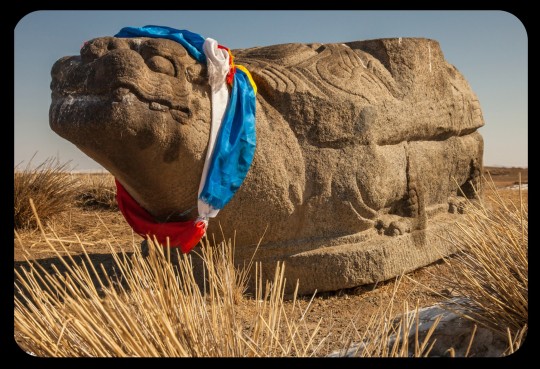
There is very little left of the ruined city today, and this statue is one of the few remaining features that can still be seen at the site. It originally formed the base of an inscribed stele, but the pillar section was somehow lost/destroyed, leaving nothing but the base (which may be a depiction of the mythological dragon-turtle, Bixi, from Chinese mythology).
This statue and the site in general always kinda remind me of the Ozymandias poem (the version by Horace Smith, not the one by Percy Bysshe Shelley):
In Egypt's sandy silence, all alone,
stands a gigantic leg
which far off throws the only shadow
that the desert knows.
"I am great OZYMANDIAS," saith the stone,
"the King of Kings; this mighty city shows
the wonders of my hand."
The city's gone —
naught but the leg remaining
to disclose the site
of this forgotten Babylon.
We wonder —
and some Hunter may express wonder like ours,
when thro' the wilderness where London stood,
holding the wolf in chace,
he meets some fragment huge
and stops to guess
what powerful but unrecorded race
once dwelt in that annihilated place
Sources & More Info:
University of Washington: Karakorum, Capital of the Mongol Empire
Encyclopedia Britannica: Entry for Karakorum
World History: Karakorum
#archaeology#history#anthropology#artifact#ancient history#mongol empire#mongolia#karakorum#middle ages#ancient ruins#art#turtle#bixi#ozymandias#poetry#mythology#genghis khan
332 notes
·
View notes
Text
Full draft for Book Two: Unity | Firsts to Grow Up
May or may not change the outline.
.
1 – Happy Birthdays: Celebrations
The Malto Terrans have been training for months to prepare themselves to travel the globe. Before the day of departure, the family and town celebrate Twitch & Thrash’s first birthday. But the party is being targeted by a mysterious new Terran who has a shard of the Emberstone as his spark.
.
.
.
2 – Happy Birthdays: Farewells
Suspecting Meridian is well and active again, Hashtag changes her mind about travelling. She gets unexpected help from Skyfire while her siblings meet their travel guides, Powerglide and Inferno.
.
.
.
3 – Kindle & Ember of Sunlight
Twitch flies to Peru with Powerglide, an Autobot who is on the fence in joining G.H.O.S.T for years. They meet a tribe who cares for twin Terrans name Kindle and Ember with the help of Slingshot – who supposedly to have died in the war.
.
.
.
4 – Kite Flying
Nightshade and Bumblebee travel to the freezing deserts of Mongolia. The Terran who resides there have trouble speaking after nearly getting taken by “monsters” if it were not for Clobber, a Decepticon outcast.
.
.
.
5 – Icy Shields
Jawbreaker braves a vicious snowstorm to confront the giant ram Terran who had attacked their G.H.O.S.T guide, Inferno, and stole Thrash’s shield.
.
.
.
6 – The Math on Spitting Fire
Back home in Witwicky, Hashtag messes around with Twitch’s modified drone only for it to be scanned as an alt-mode for the new Meridian Terran. Meridian does not drink enough coffee to handle the mess caused by ... his Terrans. Ugh!
.
.
.
7 – Hiding in the Dark
Agent Bagheri faces familiar troubles with her new station when a man-sized leaf mantis kept playing with the computers. Surprisingly, the troubles point a lead to a strange object hiding on the Earth’s orbit.
.
.
.
8 – Hiding in Plain Sight
While trying to convince Aftermath and Spitfire to leave Meridian, Hashtag and Mo stumble upon a strange creature lingering at the destroyed Emberstone cave. Terratronus feels threatened by it.
.
.
.
9 – Irony of the Creator: The First Terrans
The Terrans gather at Terratronus’ Core and learn about the early generations of Terrans born thousands of years ago that was wiped out by their “cousins”, the Quintessons.
.
.
.
10 – Irony of the Creator: Quintesson
Conflicted over Terratronus’ wish, the Terrans split into two groups: one wants to keep the Emberstones intact while the other respects Terratronus’ wish to destroy them. Meridian and his Terrans cease the opportunity to steal the relics. Unbeknownst to the three, they are being observed...
.
.
.
11 – Conjoining
In meaning & literally. Twitch faces a reflection of herself through Kindle after Ember’s injury, Thrash eases Ice Mirror’s wildness, Hashtag and Nightshade help Kites with her speech, and Jawbreaker accidentally unleashed a freaky ability on Aftermath. Spitfire wishes she can drink alcohol, driving the Megatron crazy.
.
.
.
12 – Not a Happy Birthday
The Malto farm and their guests prepare to celebrate the triplets’ first birthday before Hashtag’s departure. Terrible heatwaves kept changing the party’s plan, and Ice Mirror’s erratic behaviour causes Jawbreaker’s patience to snap.
.
.
.
13 – As Dark as a Starlit Sky
Hashtag, Twitch, and Skyfire head for the island of Borneo to meet the mantis Terran and the Terran who swims with the Bajau Tribe. Stardeep shows Hashtag the beauty of underwater to ease her anxiety. Back home, a guilt-ridden Jawbreaker accepts the Meridians’ offer.
.
.
.
14 – A Family Team
The town searches for Jawbreaker who is spending time in the Meridian Lair, realising that despite their rough behaviour towards each other, Meridian, Aftermath and Spitfire truly care for each other and only wanted to save Earth.
.
.
.
15 – Float & Sting like a Mantis
Twitch, Leaflet and Ember sneak into the Meridian Lair to rescue Jawbreaker. They then discover the Quintessons are targeting the Meridians with the help of Croft.
.
.
.
16 – Planet Traitor
At G.H.O.S.T Prison Base, Schloder is alarmed by the prisoners that his men were suddenly, mysteriously replaced by droids without his knowledge. Croft has betrayed G.H.O.S.T and has bargained with the Quintessons to wipe out every Transformer-kind on Earth by whatever means necessary.
.
.
.
17 – Choices
At Terratronus’ Core, the remaining Terrans and doctors from Witwicky discover the possible cure to energon poisoning via Emberstone freshwater. Not wanting a chance for humanity to perceive the Terrans in a good light, Croft takes the town doctors hostage, forcing the Terrans to choose them or the Emberstones.
.
.
.
18 – Arriving Threat
G.H.O.S.T Autobots discover a functioning Spacebridge beneath the memorial, swarmed by the Quintesson legion led by the Executioner who had taken over Meridian’s body along with his formulas to mind control and eradicate energon-based lives.
.
.
.
19 – Battle for the Emberstone – Part 1
The Quintesson ship crashes in Wiwicky’s mountains, preventing any life from leaving or entering its dome. Having captured Aftermath and Spitfire, using the shards in their chests as a beacon, they mind-control G.H.O.S.T Autobots to hunt down the remaining Terrans and the last Emberstone. The Terrans and humans turn to the closest available yet most distrusting people for help: the imprisoned Decepticons.
.
.
.
20 – Battle for the Emberstone – Part 2
The Terrans join hands to save every life on Earth, energon-powered and tainted, to foil the Quintesson’s plan for conquest forever.
(Twitch and Thrash die as they are at the point of the blast; AM and SF are barely alive from spark strain | The Terrans gather round the combined Emberstone and powers it up | Emberstone power infused with the rain, reviving the dead bots, heal every injury and cured people with energon poisoning. | Twitch & Thrash revives and they got upgrade, twice the size than their original bodies)
#transformers#earthspark#transformers earthspark#tfes#firsts to grow up au#tf malto#tf terrans#terran oc#transformers fanfiction#macaddam
29 notes
·
View notes
Text
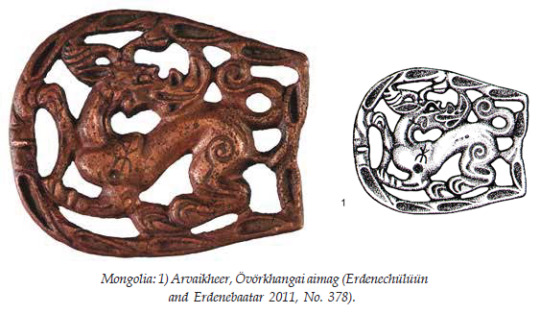

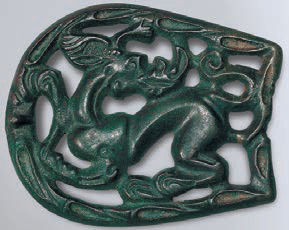
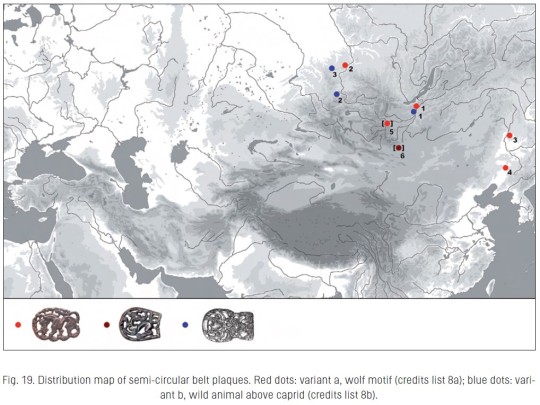
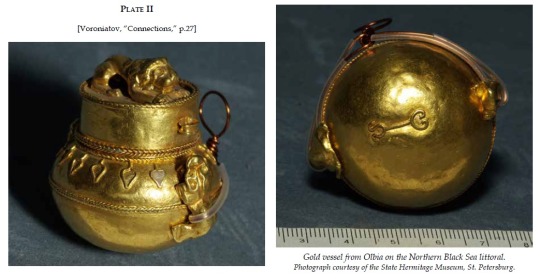
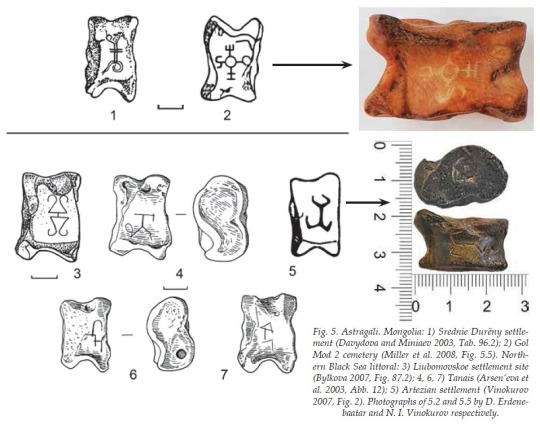
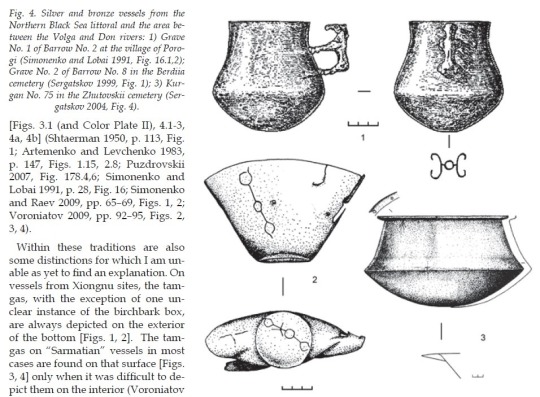

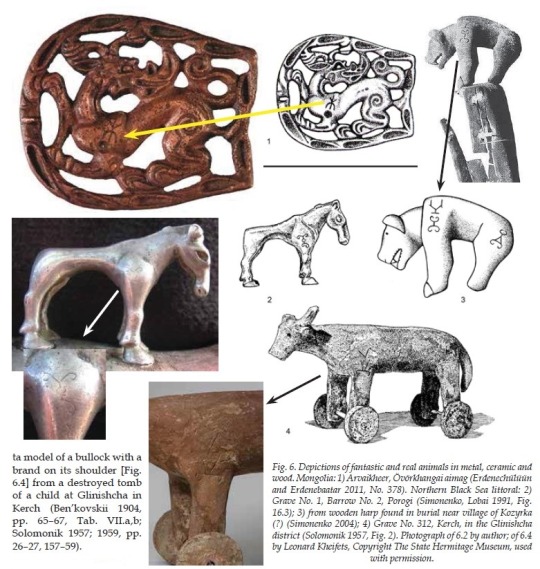
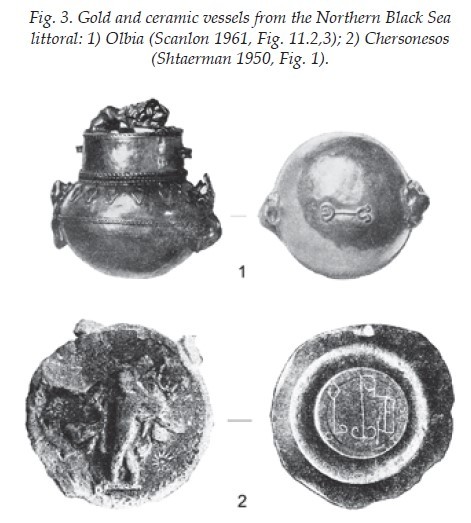

Symbols of the Xiongnu, Sarmatians, Scythians, and Alans from various branded objects 2nd C. BCE - 2nd C. CE
"Starting in the 1950s, the source base for the study of the branding of cattle has substantially broadened. One of the Sarmatian burials of the lower Don contained a unique instrument for branding an animal (Raev 1979, pp. 207–08, Fig 3.9; Yatsenko 2001, p. 12, Fig. 1.1). A male burial of the last quarter of the 1st century CE not far from the village of Porogi near the Dniester yielded a silver cup with a handle in the form of a horse with brands on the right shoulder and left flank [Figs. 3.1, 6.2]. In this same complex was a gold torque with ends shaped like horse heads. One of the heads has a brand on the cheek (Simonenko and Lobai 1991, Fig. 16.1,2; Simonenko 1991, p. 316, Nos. 154, 157). One should include here a long-known gold bracelet accidentally discovered on the shore of the Bug estuary. Its ends, analogous to those of the torque from Porogi, also are shaped like horse heads, on one of which is a brand (Solomonik 1959, pp. 131–32; Voroniatov 2013, Fig. 1.2). Additional evidence regarding the tradition of branding Sarmatian horses may be found in numerous examples of Roman-period ceremonial horse harness, whose decoration includes Sarmatian tamgas (Voroniatov 2013). S. A. Yatsenko’s idea (2001, p. 13) that details of horse gear can duplicate or imitate a real brand on the body of the horse merits close attention.
As unusual as the buckle from Mongolia is the depiction of a bear on a wooden harp [Fig. 6.3] from the interesting complex of the end of the 1st–beginning of the 2nd centuries CE not far from Olbia (Simonenko 1999, pp. 111–14, Figs. 2, 3; Simonenko 2004, pp. 209– 21, Abb. 7). In toto there are 32 tamgas on the harp, six of which are incised on the figure of the bear. A.V. Simonenko emphasized (1999, p. 112) that the tamgas are placed in the same locations as the signs on the figure of a horse which served as the handle for the silver cup from Porogi [Figs. 3.1, 6.2].
I would propose that the depiction of a branded wild animal (a bear) on Alano-Sarmatian materials is related to the depiction of a fantastic animal with a brand in Xiongnu antiquities. It is possible that the meaning attached to signs specifically on such creatures relates to something other than the pragmatic tradition of branding cattle. This phenomenon, on which I will not dwell in greater detail, requires special study. I would merely note that early medieval depictions of wild animals and mythical creatures with a brand are attested in the territory of Inner Asia and Asia Minor (Boardman 2010, Fig. 19; Samashev and Bazylkhan 2010, p. 311).
In discussing the tradition of branding cattle along the northern Black Sea littoral, E. I. Solomonik (1957, pp. 215–17) provides information about this practice in archaic Greece, a practice which might well also have existed in the Greek Black Sea colonies. Clearly horses and cattle, branded with Sarmatian tamgas and, correspondingly, their depictions appear in the steppes of the northern Black Sea littoral and in the Bosporan region with the arrival of a new wave of nomadic tribes in the first century CE.
The objects examined here in the three categories demonstrate not only the similarity of several types of tamgas of Inner Asia and Sarmatia but also suggest common features of ritual practice among the Xiongnu and the Alano-Sarmatians. All three categories of objects have characteristics which are not merely the inherent qualities found in artefacts of daily life.
The astragalus with a tamga found in the burned layer of the Bosporan fortress of Artezian [Fig. 5.5] also has been interpreted as a cult object (Vinokurov 2007). In addition to the astragalus with a tamga, in the same layer of the Liubimov settlement on the lower Dnieper [Fig. 5.3] was a whetstone inscribed with three tamgas. Scholars have attributed a cultic and magic purpose to unusual whetstones of the Scytho-Sarmatian period and specifically to whetstones with tamgas (Griaznov 1961; Anikeeva and Iablonskii 2012, p. 52; Voroniatov 2012)."
-Sergey V. Voroniatov, State Hermitage Museum - Connections between Central Asia and the Northern Littoral of the Black Sea: Evidence from objects with tamgas.
186 notes
·
View notes
Text
Cookie Run Kingdom AU : Light of Acceptance
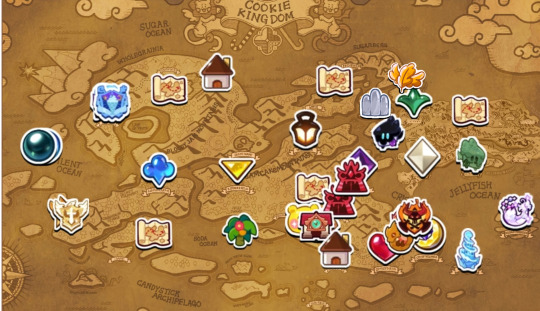

What is the lore about?
This may follow up with the recent events of the cookie run kingdom lore[latest event is Burning Spice Cookie with Golden Cheese Cookie]. This AU is about a forgotten Sixth Soul Jam that was erased from Earthbread.
Starting Point:
The soul jam is also known as a 'false' soul jam, meaning it wasn't created by the Witches but a human teen who discovered the power of the Witches. Being inspired by their craft, the human created her very own soul jam, calling it the Light of Acceptance.
The human created many of the cookies with life powder and only gave one cookie the soul jam: Garuda Sovereign Cookie. He was tasked to be the true leader of the cookies under him and are one of the many leaders that were created by the human.
However, the cost was a few leaders and himself, were turned to stone, alongside with the souljam under Garuda Sovereign Cookie's hands.
However, everything turned South and darkness overtook the land. With Garuda Sovereign Cookie having to fight until his last breath, he casted the darkness into the soul jam, saving everyone affected by the darkness.
Many years passed and soon, everything flourished in the Kingdom of Garuda. New tribes and towns were made nearby and newly formed alliances were created to protect the peace they held long.
What is the AU based on?
The AU is inspired from a region of Southeast Asia, collecting inspiration of a few other Asian culture aspects[Mongolia, Bhutan, etc] for some cookies and locations. I may make drawing concepts of how it may look like.
The biomes are going to be based on Vietnam, Indonesia and Mongolia's biomes. Fortunately, I would also give way for new biomes from other countries too.
Whole Grain Association

An association of many Kingdoms and tribes that is created for a variety of reasons such as: trades, defense training, land possession, etc.
They are unaffiliated with the Kingdom of Garuda.
Kingdom of Garuda
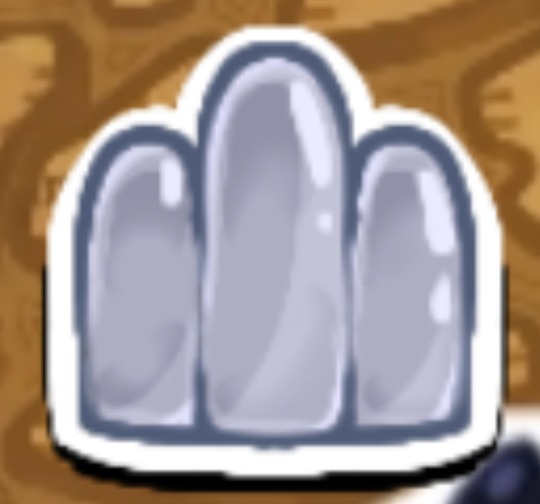
Kingdom of Garuda is situated in a rainforest, citizens are called Bimas. They are known for their arts in architecture and intricate designs in any art. Music, paintings, you can name it all.
They also have the five original soul jams implanted in some of their tattoos and clothes for their hopeful peace treaty with the other ancients.
Their current owner is Po-Li Sovereign Cookie, younger brother of Garuda Sovereign Cookie[former]. There are currently 10 cookies who are related to Po-li Sovereign, some changed their names to avoid conflict with those who are against the Kingdom of Garuda.
That is all for my rambling of lore. If you want some more lore of this AU, you can comment or give an ask. Any questions? I'm free to answer but it may take time.
The AU is still new so changed might occur during its development. This AU is formed by art and writing. Comics and doodles may be made if I have time.
See ya mates.
22 notes
·
View notes
Text
Wolfstar Microfic - Stronger
Words: 627
@wolfstarmicrofic
This was written as a response to multiple people asking what Remus did in fourth year after the Moon-Grumpy fic (https://archiveofourown.org/works/58156276) but it can also be read as a stand alone!
🌙✨🌙✨🌙
The first time Remus tried firewhisky, he hated it. It was stronger than he expected, and within half an hour he was good and tipsy, and tipsy Remus liked to talk.
James, equally tipsy, found this fascinating. He was so used to Remus holding himself back. It was like getting to see a whole new side of him, and it was so endearing.
“What are we doing for Hogsmeade next week? I need to go to Honeydukes. Need.” Remus said, lying on his bed with his eyes closed. Pete had gone to throw up, and Sirius had been dared to sit on Marlene’s lap for fifteen minutes, half an hour ago.
“You not going with Em?” James was propped against his trunk, grinning.
Remus laughed softly, “No, I’m not.”
“Is she busy?” James asked. “Too busy for you?”
“Nah.” Remus paused, “We broke up.”
“You what?!” James yelled. “When did this happen?”
“About two hours ago.” Remus wanted to curl up into a ball, roll off the bed and roll away into the distance where James wasn’t about to interrogate him about his failed relationship.
“Moony! What the fuck?” James crawled across the room to sit next to Remus’ bed. “Are you alright?”
Remus shrugged, “Yeah, I think so. I didn’t see it coming, but I’m also… I don’t know. I thought I’d be more bothered.”
James studied his face, “So, what happened?”
“Oh, we just… drifted apart, I guess.” Remus wished he was having this conversation sober. It would be so much easier to lie sober.
“Well, that’s bullshit, because she was up here reading with you last night.” James continued to stare at him. “So what really happened?”
“She noticed something about me, and it bothered her. When she asked me about it, I didn’t deny it, so she broke up with me.”
“Is this— Moony did she— She dumped you because you’re a werewolf?”
Remus spluttered and sat up, “No, of course not! Jesus Christ, Prongs! She dumped me because I’m in love with Sirius.” James blinked at him, as the realisation of what he’d just said dawned on Remus’ face. “Oh. Oh no, no. Wait—”
“You are?” Remus didn’t know what he’d expected, but it wasn’t James looking at him like he’d just announced the birth of a child. He said nothing. “Moony?”
Remus nodded slowly, “I think so.”
“Since when?” James looked way too happy about this. Remus had so many regrets. He wondered if there was a nomadic tribe in Mongolia that would accept a werewolf. Probably not. They’d never trust a wolf around the sheep.
“Maybe since forever. I don’t really know.” Remus rolled his eyes as James let out an excited yelp. “It doesn’t bother you?”
“That you fancy Pads and not me?” James grinned, “Well, there’s no accounting for taste, mate.”
“Tosser.” He muttered, “No, that I’m … queer?”
“Oh, that? No, of course not.” James tried to stand up unsuccessfully.
“And you won’t tell him, right? You won’t tell anyone?”
“I reserve the right to tell this story on two occasions. When you start dating, and when I’m the best man at your wedding. The two of you have to duel to see who gets me.” James managed to hold onto the bedpost and was finally on his feet.
“When?”
“Pads could do a lot worse than you.” James shrugged. “And you could do a lot better than Pads.”
“Thank you?” Remus squinted at him. “Firewhisky is fucking lethal.”
At that moment, Sirius burst into the room with a purple hickey blooming on his neck. “Good evening!”
James looked at Remus sympathetically before turning to indulge Sirius in whatever bullshit he was about to announce. Remus sighed, back to pretending.
#fanfic#wolfstar#ao3#fanfiction#remus lupin#sirius black#remus x sirius#marauders#wolfstar microfic#remus loves sirius
39 notes
·
View notes
Note
One thing I didn't quite understand is the fact that Jingse is living with Qianlong again and even abandoning the clothes of the tribe she married into and dressing up as a Qing princess again.
When Jingse returned to Beijing, she was no longer living in the palace. She was given a residence in Beijing and that's where she lives. She just comes into the palace to visit.
By that time, Jingse's marriage was pretty unhappy but despite that she had produced an heir. There was a throw away remark that if it wasn't for the child, she and her husband would have divorced already. So likely when she came back to Beijing, she and her husband was more or less separated because divorce wasn't actually an option for that kind of marriage. In Beijing she didn't have to wear Mongolian clothes because she was back in a Manchurian court where it wasn't expected for her to wear Mongolian clothes (except for official occasions like Ruyi's coronation). She does still return to Mongolia whenever Qianlong goes to Mongolia on his yearly diplomatic trip there, and there she does goes back to dressing in Mongolian clothes.
7 notes
·
View notes
Text
The Karakhanid Khanate: Part 1: Origins, Culture and Economy

Tash Rabat. Wikipedia (user: Firespeaker)
The Sources
Researching the Karakhanid Khanate poses several challenges. Source material is scarce and, in some cases, has been proven to be entirely unreliable. To date, almost no internal sources from the Karakhanid Khanate have been found. Contemporary historical accounts of the Karakhanids seem to have existed but are now lost to the ravages of time save a few fragments. Information therefore has to be gathered from historical works about neighboring dynasties or general histories.
An important source is the fourteenth-century historian Jamal Qarshī. Another source is the book “Tazkirat al-bughra”, although a lot of its stories are nothing more than fancy make-belief. Omeljan Pritsak and Vasily Bartold's works on the Karakhanids remain the most reliable modern accounts of the khanate to this day. In recent decades, numismatics has emerged as an invaluable resource for understanding Karakhanid political history. The study of coinage has enabled scholars to reconstruct a reasonably comprehensive list of Karakhanid rulers and even appanage-holders. An important contributor in the studies of Karakhanid money has been Boris Dimitrievich Kochnev. Archeological surveys have also compensated the lack of written sources to a great extent.
Origins
The Karakhanids ruled over a confederation of Turkic tribes formed in the 9th century CE. The term Karakhanid derives from Karakhan or Qara Khan, which literally means “black” or “courageous ruler”—a title that appears on the dynasty's coinage. Other attested titles include Qara Khāqān and Ilak-Khanid (or Ilek Khan), the latter deriving from a term used to denote nobility within the khanate. In contemporary sources, the Karakhanids were also referred to as Kāqāniya (the Kāqān house), al-Mulūk al-Kāniya al-Atrāk (the Khanal kings of the Turks), and Āl-e Afrāsiāb (the house of Afrāsiāb, or the kings of Turān in the Shahnameh).
The exact ethnic origins of the Karakhanids remain unclear. It is generally believed that they emerged from a confederation of several Turkic tribes, including the Karluks, an ethnically distinct Turkic group. Possible connections with the Uyghurs have also been suggested, as both groups originated from the same region. Additionally, the Karakhanid titles bugra and gongtuo, both meaning “ruler,” are derived from the Yagma tribe. However, the precise ethnic identity of the Karakhanid rulers themselves remains uncertain.
The Karakhanids originally lived in the China-Mongolia border region before being pushed westward into what is now the Chinese province of Xinjiang. The Turkic tribes in this area eventually split into two groups. One group, the Uyghurs, remained in Xinjiang and developed a distinct culture centered on the Uyghur language. This language was initially written using the Old Aramaic script, which they adopted from local Nestorian Christian merchants. Meanwhile, the Karakhanids continued migrating westward, eventually reaching the border of the Islamic Samanid Emirate around 850 CE. Around the city of Kashgar—now one of the westernmost cities in China—the Karakhanids established an independent khanate. Remarkably durable, the Karakhanid Khanate lasted until 1212. At its height, the dynasty ruled a vast territory in Central Asia, stretching from the Oxus River (Amu Darya) to the Tarim Basin.

Map of the Karakhanid Khanate. Wikipedia
From the outset, the Karakhanids faced a challenge common to many Turkic and Islamic states: the absence of primogeniture. Among the Turkic tribes of Central Asia, the concept of succession by the eldest son was unknown. As a result, all the sons of a khan typically demanded a share of the inheritance. This practice of partitioning power continuously undermined the cohesion of the Karakhanid state. By the mid-11th century, there were as many as four separate Karakhanid capitals across Central Asia.
Islamization
Like most Turkic peoples in Central Asia at the time, the Karluks—ancestors of the Karakhanids (cf. supra)—were primarily adherents of Tengrism, a steppe-origin religion rooted in animism and shamanism. The Karakhanids later adopted Buddhism before ultimately converting to Sunni Islam in the 950s, making the Karakhanid Khanate the first Turkic Islamic state in history. Following their conversion, they began persecuting Buddhists within their realm as idol-worshippers, although most other religious groups were largely left in peace.
Frederick Starr suggests that the Karakhanids' conversion may have been motivated by their increasingly sedentary lifestyle, with Islam seen as a religion more suited to urban populations. He concedes, however, that this theory does not fully explain why the Uyghurs—who were even more urbanized than the Karakhanids—remained Buddhist during the same period. Another possible explanation for the Karakhanids' mass conversion is the effective missionary activity carried out by emissaries from the Islamic Samanid Empire.
This religious transformation had a profound impact on the culture of the Karakhanid Empire. Eager to present themselves as devout Muslims, the Karakhanids began constructing mosques, mausoleums, and establishing waqfs—inalienable charitable endowments involving the donation of land, buildings, or other assets for religious or philanthropic purposes. Under Karakhanid rule, for example, a large hospital was built in Samarkand as a waqf. A madrasa (Islamic school) was also established in the city to educate local youth in the Sunni faith.
Another significant change brought about by the conversion to Islam was the widespread adoption of Islamic names in place of Turkic ones. Islamic honorific titles also began to appear in Karakhanid society, although the rulers retained largely Turkic titles. In fact, the ruling elite were inclined to preserve Turkic culture as the culture of military strength and political authority.
Trade and economy
The conversion to Islam likely benefited the Karakhanids, as they ceased to be viewed as heathen enemies from the east and were instead recognized as fellow Muslims. This shift improved relations with the Islamic West and may have helped stimulate trade across the continent. Archaeological surveys of various coin hoards have indeed confirmed a high level of commercial activity within the khanate.
While the Karakhanids were initially content to leave trade in the hands of others, they gradually emerged as “astute managers of their combined economies,” as Starr notes. The khans began to make significant investments in commerce across their empire. Numerous caravanserais were constructed along previously neglected trade routes. A notable example is the Ribat-i-Malik, built by the ruler Shams al-Mulk Nasr in 1078 along the road connecting Bukhara and Samarkand. Another is the remarkable Tash Rabat, once mistakenly believed to be a Christian monastery, which stands in isolation along a challenging stretch of the route between Uzgend and Kashgar.

Ribat-i Malik. Uzbek Travel
An important source of wealth for the Karakhanids was their trade with the Sinitic states to the east. They were likely proud trading partners of the Northern Song dynasty (960–1127), whose authority and prosperity had attained an almost legendary status in the eyes of western polities. Commercial and diplomatic relations were also established with the Khitan Liao dynasty (907–1125), and these ties were even reinforced through matrimonial alliances. Though less frequent, trade with the Jurchen Jin dynasty (1115–1234) was nonetheless significant.
North–south commerce with the nomadic peoples of the steppes was especially vital. The steppe tribes supplied horses, pack animals, furs, foodstuffs such as yogurt, as well as wool, carpets, and felts. Another noteworthy trading partner was the warrior clans of Mongolia—the ancestors of Genghis Khan.
The Karakhanids stimulated their economy through extensive coin minting. To date, numismatists have identified thirty Karakhanid mints. Most of these produced low-value leaded copper coins, which were commonly used in everyday transactions. However, for larger sums, merchants within the khanate still relied on the trusted Samanid dirhams.

Dirham of Karakhanid ruler Ali-Tegin, minted at Dabusiyya in 1032/3. Classical Numismatic Group, Inc.
Despite the 10th–12th centuries being generally regarded as a period of decline for the Silk Road, the khanate experienced economic growth and relative prosperity. The wealth of the Karakhanid rulers became well known, with stories circulating throughout Asia about khans gifting trays of gold to poets who pleased them.
During the 11th and 12th centuries, the regions under Karakhanid control experienced increasing urbanization. In particular, Semirechyè and southern Kazakhstan flourished, with archaeological evidence confirming the emergence of new cities alongside the expansion of older ones. Palaces, grand mansions, and bathhouses were constructed in these settlements, reflecting the wealth and sophistication of the khanate. The rise in both mining and the construction of irrigation canals further indicates growth in agricultural and extractive industries.
Agricultural lands increasingly came under the control of the new Turkic military aristocracy, often at the expense of earlier landowners. Land was typically measured by the amount of grain required for sowing, although standard area units were sometimes used. There appear to have been few legal restrictions on land sales, which occurred frequently. Larger estates were often worked by tenant farmers under a sharecropping system. While it remains unclear whether slaves were used in agriculture, the slave trade continued to thrive in the region. Most slaves were war captives taken during the frequent conflicts that marked Central Asian history.
Persianization
While the Karakhanids' rise on the international stage accelerated the Turkification of Central Asia—particularly in the Tarim Basin—the elite of the khanate increasingly embraced the urban culture of the Perso-Arab Muslim world. This gradual process of acculturation is evident in the Karakhanid language, which saw a marked increase in Persian and Arabic loanwords. One explanation is straightforward: the antiquity and refinement of Persian civilization, combined with the spiritual authority of Arab culture, captivated the Turkic peoples. Another reason lies in the practicality of this urban culture, which aligned more closely with the new, sedentary lifestyle adopted by the Turks as they settled in major cities. Perso-Arab cultural influence permeated nearly every aspect of elite Karakhanid life—from the pottery they used to the design of their homes and the style of their clothing.

Bowl with bird. Afrasiab (Samarkand), 11th century. State Museum of History of Culture of Uzbekistan
This cultural assimilation was not without resistance. Several Karakhanid rulers, intellectuals, and aristocrats criticized and opposed the changing cultural landscape. As a form of protest, some chose to continue living in tents, emulating the nomadic lifestyle of their ancestors. Among the most prominent cultural critics was the prolific writer Mahmud al-Kashgari, who lamented the abandonment of traditional Turkic customs by his fellow Turks. Nevertheless, the processes of urbanization, Islamization, and Persianization steadily advanced, ultimately transforming the Karakhanid Khanate into an Islamic Turkic state with a strong Persian flavor.
Olivier Goossens
Sources:
-Biran, M., "Ilak-Khanids", Encyclopedia Iranica, 2012.
-Davidovich, E., "The Karakhanids", UNESCO, 1996. Consulted on 9 April 2025 through https://en.unesco.org/silkroad/sites/default/files/knowledge-bank-article/vol_IVa%20silk%20road_the%20karakhanids.pdf.
- Golden, P., "The Karakhanids and Early Islam", The Cambridge History of Early Inner Asia, ed. D Sinor, 1994, Cambridge, pp. 343-370.
-Paul, J., "The Karakhanids", El-Three, Vol. 3, 2021, pp. 57-69.
-Starr, F., Lost Enlightenment: Central Asia’s Golden Age from the Arab Conquest to Tamerlane, 2013, Princeton.
-Theobald, U., “The Qaraqan Empires 黑汗 (Karakhans)”, ChinaKnowledge.de. Consulted on 9 April 2025 through http://www.chinaknowledge.de/History/Altera/qaraqans.html.
#silk road#islamic#islamic history#islamic culture#islamic art#caravanserais#medieval#middle ages#medieval history#medieval art#asia#asian history#asian art#kazakhstan#kyrgyzstan#china#chinese history#turkic people#turkish history#turkic#nomad#central asia
8 notes
·
View notes
Note
Cait has been to Nepal as model for a photoshoot and saw the Everest. What she did say she'd want to visit is Mongolia. As for Sam, the Everest movie is dead. What he's looking to do is narrate an Everest documentary. Problem is, it's been done very well before to be worth it except to sell to his most ardent fans who buy everything he sells.
Dear Everest Anon,
She saw the Himalayas, from the lower mountain zone in Dhulikhel - not the Everest. That would be exactly the same thing as me pretending to see Mycenae from my terrace in Athens - same distance -, albeit I'll give you this: different topography.

And yes, you are correct - still nasty, though - she has been to Nepal and found that watching the sun rise over those majestic mountaintops was a 'deeply spiritual' experience.
It's all in that January 2022 High Life magazine interview, while she was promoting Belfast, by the way (https://bahighlife.com/stories/outlander-actress-caitriona-balfe-reveals-her-favourite-travel-memories):

I didn't have that quote seared in my brain, though and I remembered it just as I referenced it: a dream/bucket list destination, which is - mind you - exactly what her answer suggests.
As for Mongolia, which I suspect must be a very abstract place to you, this comes from an answer on X, back when she was still doing those cute #AskCait Q&A improv sessions:

It took me five minutes to find it and I remembered it vaguely - Central Asia is a space I know very, very well.
The closest I have ever been to Mongolia - probably way closer than you - was on my Silk Road solo trip, in 2010. Ever since, Switzerland could never compete with the magic of Kyrgyzstan, especially when you wake up in your yurt in Tash Rabat to this view:

This being very much akin to a Mongolian landscape, by the way. Serene and graceful and very, very quiet. And the people are warm, generous and have a wonderful sense of humor. It's only normal to dream of such a place, for a dream it is and nothing less.
So yes, your comment reads like globally correct, although I think your tone could have been more polite: we haven't been properly introduced, you and me.
But then you can't help yourself and spoil it all with your tribe's mandatory and gratuitous S hate moment. Many things have been 'very well done before' and yet they are still being presented, over and over again, just because life and the world change all the time: I suppose you are familiar with the concept?
You know what? Why don't you go to the Himalayas and do your own documentary project on it, Anon? Traveling will do you a hell lot of good and I will be your most ardent promoter.
Until then, which is probably never, I'll just watch his documentary or whatever he would choose to make out of it with great pleasure. You will still be in your armchair, at Clacton-on-Sea, or Weston-super-Mare, or wherever.
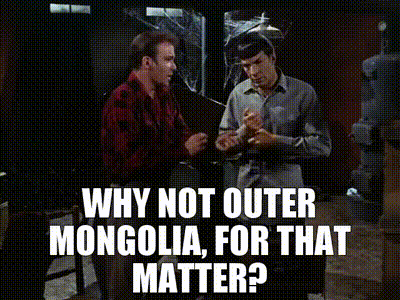
53 notes
·
View notes
Text


Batu Khan: The Mongol Prince Who Redefined Eurasia
Few figures in world history have had a deeper yet more understated influence than Batu Khan, the grandson of Genghis Khan and founder of the Golden Horde. Batu's military campaigns, political vision, and cultural legacy forever altered the trajectory of Eurasian history, stretching from the steppes of Mongolia to the forests of Russia, and into the heart of Europe. His conquests set in motion vast demographic shifts, shaped the identity of Russia, and established the Tatar cultural footprint that endures to this day.
The Rise of Batu Khan
Born around 1207, Batu Khan was the son of Jochi, Genghis Khan's eldest (and possibly illegitimate) son. As part of the powerful Borjigin dynasty, Batu inherited the westernmost portion of the Mongol Empire. In the 1230s, under orders from the Great Khan Ögedei, Batu led one of the largest military expeditions in history into Eastern Europe. His armies swept through Central Asia, the Caucasus, the Rus' principalities, and deep into Poland and Hungary.
The sacking of cities like Kiev in 1240 marked the collapse of Kievan Rus' and began a new era in Eastern European history. Batu stopped short of conquering Vienna due to the death of Ögedei in 1241, and instead of returning to Mongolia, he established his own semi-independent state along the Volga River: the Golden Horde.
Migration and Demographic Transformation
Batu Khan's campaigns and rule triggered massive demographic upheaval. Cities were destroyed, populations massacred or displaced, and entire regions depopulated. Many Slavic peoples migrated northward into forested regions, sowing the seeds for the rise of Muscovy.
Meanwhile, the Mongol elite settled among Turkic tribes, creating a cultural fusion that would evolve into the Tatar identity. Administrators, merchants, and artisans followed the Horde across Eurasia, facilitating an unprecedented movement of people, languages, and ideas. The very fabric of Eastern Europe changed under Batu's influence.
The Golden Horde and Tatar Identity
Although Mongol by blood, Batu's Golden Horde rapidly absorbed Turkic and Islamic influences, becoming what Europeans would come to call "Tatar." The Horde was initially Tengrism in faith but tolerated Orthodox Christianity, Judaism, and later embraced Islam, particularly under Batu's brother Berke.
Tatar society was built on steppe traditions: nomadism, warrior codes, hospitality, and a sense of honor rooted in kinship and allegiance. Women in Tatar aristocracy held influence and occasionally ruled in the absence of their husbands. The Horde's capital, Sarai, became a multicultural hub of trade and diplomacy, linking China with the Black Sea.
Tatar culture emphasized oral storytelling, horsemanship, and diplomacy. Their aesthetic legacy survives in Islamic architecture, craftwork, and the organization of urban centers across the Volga and Ural regions. Over time, the Tatars formed the core of a distinct Eurasian cultural identity.
The Russian-Tatar Synthesis
Batu's legacy in Russia is complex. While his invasions devastated Rus', his rule indirectly encouraged the rise of a centralized Russian state. Mongol administrative practices—tribute collection, census-taking, military conscription—were adopted by Rus' princes. Moscow, a minor outpost, grew powerful as a loyal tributary of the Horde.
The prolonged contact between Mongols, Tatars, and Russians led to a unique cultural synthesis. Military organization, political centralism, and aspects of language and dress were influenced by the Horde. Intermarriage and cultural osmosis blurred ethnic lines.
As the Golden Horde fragmented, many Tatar khanates emerged, such as Kazan and Crimea, which continued to influence Russian political and military strategy. Even after the fall of these khanates to Ivan the Terrible, their customs, administrative knowledge, and population remained part of the Russian imperial structure.
Modern Legacy: Tatar Influence in Russia Today
Today, the Tatar people remain the largest minority group in Russia. The Republic of Tatarstan, with its capital in Kazan, stands as a vibrant center of Tatar culture, language, and Islamic heritage. Tatar customs, such as cuisine (chak-chak, pilaf), music, and Islamic festivals, are deeply interwoven into the broader Russian mosaic.
Tatar intellectuals, writers, and scientists have contributed significantly to Russian and Soviet history. Kazan itself has been a symbol of religious coexistence, where Orthodox cathedrals and mosques rise within view of each other.
#book cover#literature#book#bookworm#history#Batu-Khan#Batu Han#Mongolian#Tatar#Tatarstan#Russian history#Dschenghis Khan#Cengiz Han
4 notes
·
View notes
Text
Terrans Around the World
Firsts to Grow Up, Book Two: Unity
After months of training, the Malto Terrans embark on a journey around the globe to collect the Emberstones and meet more Terrans to bring them to Witwicky so they can meet Terratronus. But none of the Maltos' training had prepared them for how difficult the last part will be...
.
Ice Mirror
The sole Terran born from his Emberstone pool into the harsh endless winters of the Siberian tundra. Having never seen a human, Cybertronian, or experience any form of people communication, Ice Mirror is the most difficult the Malto Terrans have met yet.
.
Kites
Living with a nomadic family in the plains of Mongolia, Kites is delighted to meet more Transformers-kind like her. But after "monsters" almost took her beyond the sky, badly affecting her once fluid speech, she'd rather stay home.
.
Kindle & Ember
Twin Terrans residing at a native village in Peru are more than eager to meet a Titan that was also their biological parent. Their biggest obstacle is their mentor, who wanted them to stay away from whatever issues that would make them carry the responsibility of his faction's mistakes.
.
Leaflet
The smallest Terran, yet, who lives in the Sabahan rainforests searching nonstop for his lost sibling. His intelligence made up for his small size.
.
Stardeep
An aquatic Terran who swims with the Bajau Tribes. She is excited to go on an adventure, though her body has relied on buoyancy, making even walking very difficult for her.
.
Eggling
A yet-to-be-born Terran stuck in its egg form when it sprouted near the ruins of Chernobyl. Terratronus could not confirm its living status due to the radiation. Shockwave can, so he takes Eggling into his possession.
.
.
.
#transformers#earthspark#firsts to grow up au#macaddam#earthspark au#tfes#tf terrans#terran oc#transformers oc#transformers fanfiction
25 notes
·
View notes